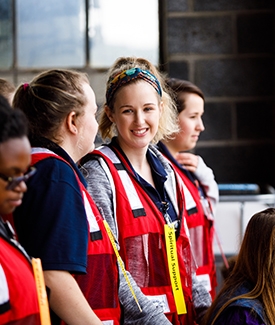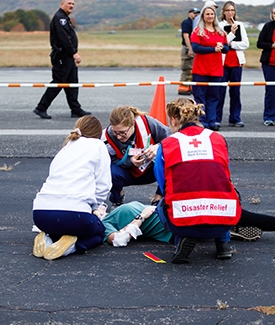Emergency Management & Community Engagement

Contact Us
Storm Preparedness
For all relevant weather updates, please follow this link to the National Weather Service
Check here for Flood Preparedness Information!
Downloads
Be Prepared for Any Emergency
Sign Up for Campus Alerts
(Log into myLU first)
The Emergency Management and Community Engagement (EMCE) Department takes an all-hazards approach to continuously prepare the Liberty University community for any emergency.
There are many kinds of threats, hazards, and emergencies that can take place, and EMCE is helping the Liberty community to be prepared. With planning and procedures in place, Liberty University is better able to respond to and recover from any incident.





